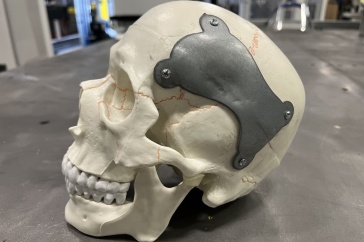
Last year, when UNH’s Prevention Innovations Research Center released uSafeNH, the smartphone app that delivers realtime information about nearby crisis centers, hospitals, police and campus-based support was hailed as an innovative way to put resources for victims of sexual assault into New Hampshire college students’ hands. Now, the group has a new product that takes uSafeNH a step further — in more than one sense. Released in September, uSafeUS is available to students at colleges and universities across the United States, and has added important new safety features that can be used to help prevent an assault from happening in the first place.
“Our goal is to help prevent assaults where possible and to help schools put information directly into the hands of students and those who support them at the exact moment they are needed.”
Like uSafeNH, uSafeUS uses geospatial technology to provide location-specific information about resources for victims, family members, friends and others in the event of a sexual assault. In addition, the new app also includes several features students can use to extract themselves from unsafe-feeling situations. The Time to Leave™ function allows students to send themselves a simulated text or phone call that provides an excuse to leave an uncomfortable situation, and Angel Drink offers a discreet way for students in a public setting to notify a bartender or wait staff that help is needed. The Expect Me™ feature enables students walking home alone at night to let others know they may need help. Expect Me was originally included in uSafeNH but has been redesigned to include a new visual timer and texting option.
“Preventing sexual assault is a top priority for every college and university, but schools face many challenges in delivering on this critical mission,” says Sharyn Potter, Prevention Innovations Research Center’s executive director of research and a UNH professor of sociology. Information for students and allies must often be searched for on websites; information may not be aligned between campuses and providers; and Title IX and student affairs staff are often overworked, under-resourced and unable to provide immediate comprehensive support. And the stakes are tremendously high — Prevention Innovations’ research confirms that the impact of assault on victims can last a lifetime. “Our goal is to help prevent assaults where possible and to help schools put information directly into the hands of students and those who support them at the exact moment they are needed,” Potter says.
To that end, uSafeUS gives schools a customizable platform to manage their prevention and response strategies, as well as an implementation toolkit for the app that includes e-mail and social media communications, posters, tools for campus residence life staff and checklists for launching. These tools help campuses launch the app successfully, and save Title IX and student affairs personnel significant time. Colleges and universities also receive anonymous user analytics about app usage at their campuses.
uSafeNH was conceived by Kathy Kimball, the statewide coordinator of New Hampshire’s Sexual Assault Resource Team Program, and developed in consultation with the NH Attorney General’s Office, the NH Coalition Against Domestic and Sexual Violence and the NH Violence Against Women Campus Consortium. The new nationwide version of the app reflects feedback from student focus groups and interviews with campus administrators.
Keene State College is one of the 22 New Hampshire institutions that have been using uSafeNH since it came out in fall 2016. The school’s Title IX coordinator, Jeff Maher, says the app is a great resource for Keene’s students, faculty and staff alike. “We encourage not only our students to download it but also all our campus community members,” Maher says. “It’s a great tool to help someone impacted by sexual violence make the choices that best suit their needs.”
UsafeUS is available everywhere as a free download on the iTunes app store and Google Play.
Originally published in UNH Magazine Winter 2018 Issue

















































